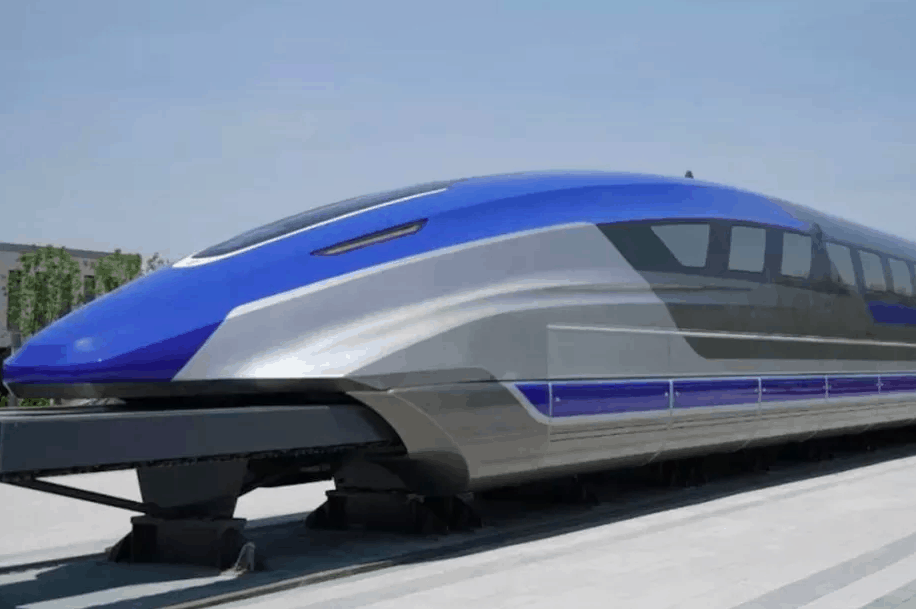With its sights set on redrawing the historic Silk Route across the world, the Chinese government has been sinking billions of dollars into expanding its transport infrastructure, both within the country and outside its borders. Apart from bolstering its road and railroad networks, China has also done exceedingly well in improving the speed of its trains, pioneering the concept of magnetic levitation (MagLev) to run trains.
China’s state-owned train manufacturer, the China Railway Rolling Stock Corporation (CRRC), has unveiled a MagLev train that clocks a maximum speed of 373 miles per hour. With the promised speed, the MagLev train can transport passengers from Beijing to Shanghai in around three and a half hours, roughly an hour faster than the time it takes to fly from Beijing to Shanghai. In addition, when the time it takes to board and deboard an airplane are added to the time of a journey, the flight may be much longer than the one on a maglev train.
MagLev is a concept where trains literally float over rails, made possible by having strong electromagnets on both the wheels and the rail. These magnets make them repel each other – enough to eliminate the possibility of friction between the train and the tracks, and helping it cruise at hundreds of miles per hour in a highly fuel-efficient manner.
Though the technology has been commercially deployed in China since 2003 with a MagLev train connecting Shanghai’s Pudong airport to the city’s downtown, the maximum speed of the train was 100 mph less than the current MagLev train. The train is expected to go into commercial production by 2021, once the train clears tests.
CNN reported that the CRRC took nearly three years for its design and development, finally materializing a lightweight and high-strength train body, which laid the foundation for the development of five sets of MagLev prototypes. CRRC Qingdao Sifang, a subsidiary of CRRC, is now going a step further and establishing a test center and a MagLev trial production center, scheduled to commence operations later this year.
Across the world, multiple models of transport are taking shape – all built around the idea of making transit faster, more efficient and sustainable in terms of reduced carbon emissions. In the U.S., land transport is witnessing the rise of the Hyperloop – a system that transports people and cargo at supersonic speeds through a vacuum tube. First envisioned by Tesla CEO Elon Musk in 2012, the technology’s promise has sprouted several startups across the world that are racing towards making it a reality before 2020.
Then again, a lot of the action in hyperloop technology does happen in Asia, with China and India being favorite test sites. Even in the MagLev segment, China is not the only country looking to perfect the technology, as it’s Asian rival Japan also runs MagLev trains and incidentally holds the train speed record at 374.6 mph. Though this record was set on an experimental track, the train is expected to gain mainstream relevance by 2027, as Japan is working on connecting the cities of Tokyo and Nagoya through the service, which is touted to cut transit times by half.











machu picchu tour
That could connect Peru, China, Mexico, Europe and all world to travel faster!
D. Beatson
That is an impressive train speed, but still one hour longer, not faster, than the current flight times.